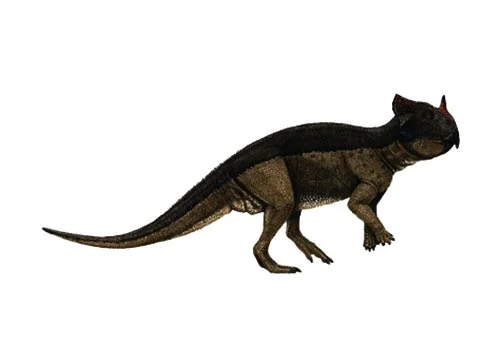Platyceratops (Flat horned face)

Plat-e-seh-rah-tops
V. R. Alifanov - 2003
Herbivore
Estimated 4 meters long
Ceratopsian
P. tatarinovi (type)
Mongolia - Barun Goyot Formation
Late Cretaceous, 75 million years ago
Platyceratops Facts
Platyceratops is a genus of herbivorous dinosaur that lived during the Late Cretaceous period, around 75 million years ago, in what is now North America. Its name, Platyceratops, means “flat-horned face” in reference to the flattened, triangular frill on the back of its skull.
Platyceratops was a relatively small ceratopsian dinosaur, measuring about 4 meters (13 feet) in length and weighing around 400 kilograms (880 pounds). It was a quadrupedal herbivore that probably fed on low-growing vegetation.
The flattened frill on the back of its skull was relatively small compared to other ceratopsians, and its small horns and lack of a large nasal horn suggest that it was not as heavily armored as other members of its family. It is believed that the frill may have been used for display, perhaps as a means of attracting mates or intimidating rivals.
Platyceratops is known from only one species, Platyceratops tatarinovi, which was named in 1951 by the Soviet paleontologist Anatoly Konstantinovich Rozhdestvensky, who found the first fossils of the dinosaur in the Gobi Desert of Mongolia.
Although little is known about Platyceratops, it provides valuable insights into the diversity of ceratopsian dinosaurs during the Late Cretaceous period, and the evolutionary adaptations that led to the development of the distinctive frills and horns that characterize this group of dinosaurs.



